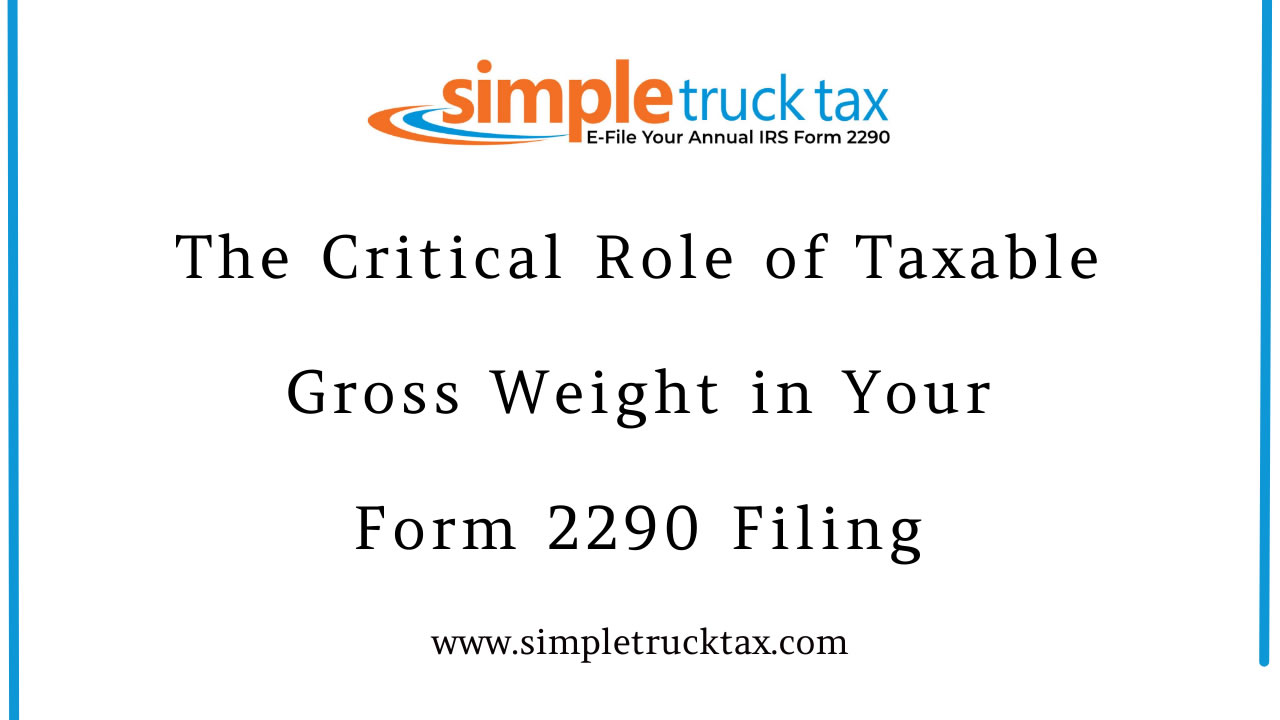
The Critical Role of Taxable Gross Weight in Your Form 2290 Filing
For each owner-operator and trucking company, IRS Form 2290, the Heavy Highway Vehicle Use Tax (HVUT) return, is an annual requirement. The idea of paying tax on heavy trucks is simple, but finding your correct taxable gross weight is where most truckers get into trouble.
It's not a detail to ignore; it's the determining factor that directly affects your HVUT tax bill. Getting it wrong results in penalty fees and interruptions in your operations.
What is Taxable Gross Weight, Exactly?
Taxable gross weight is more than the weight of your empty truck, according to the IRS. It's an overall computation that consists of three important elements:
The vehicle's actual unloaded weight: That would be the truck or tractor itself, in full working trim, including all permanent equipment (such as a toolbox, crane, or refrigeration unit) and a full tank of fuel, oil, and water.
The actual unloaded weight of any trailers or semi-trailers most commonly employed in conjunction with the vehicle. It's equipped for service, complete with everything including tools and fluid capacity.
The heaviest load weight usually transported on the vehicle and any trailers or semi-trailers employed with it. This is more about your vehicle's intended hauling capacity, not necessarily what you're carrying this day.
It's essentially the highest total weight your heavy vehicle is intended to transport on public roads during the tax year, even though you might not operate at that highest point all the time.
Why Is Accurate Taxable Gross Weight So Crucial?
Your HVUT bill directly correlates with your vehicle's taxable gross weight category. The IRS has a thorough schedule involving different weight classes, each with a corresponding tax rate.
- Calculates Your Tax Bill: A faulty weight declaration may have you paying too little or too much in truck tax. Underpayment can lead to IRS penalties and interest.
- Ensures Compliance: Proper reporting of your vehicle weight is needed to comply with federal taxation and avoid problems in state vehicle registration. With no accurate proof of HVUT payment (your stamped Schedule 1), you could be unable to renew your tags.
- Avoids Penalties: The IRS is serious about inaccurate filings. Filing the wrong taxable gross weight is a frequent error that can precipitate a late payment penalty, interest, and even an audit. These added costs of money can make a big dent in your bottom line.
What If Your Weight Changes?
It is important to realize that if the taxable gross weight of your vehicle goes up during the tax period and lands it in a different, higher tax bracket, you need to file an amended Form 2290. This will keep you in compliance and pay the right tax amount.
Make Your Filing Easy: E-File Your Form 2290
Calculating your taxable gross weight might be complicated, but e-filing services are made to make this easy. Most IRS-approved platforms have inherent calculators and assistance to assist you in properly calculating your vehicle's weight and choosing the right tax classification.
This minimizes the threat of mistakes and gets you your stamped Schedule 1 with ease, giving you the valuable proof of payment you require for your business. Don't under appreciate the importance of this number; proper reporting is the foundation of hassle-free HVUT compliance.